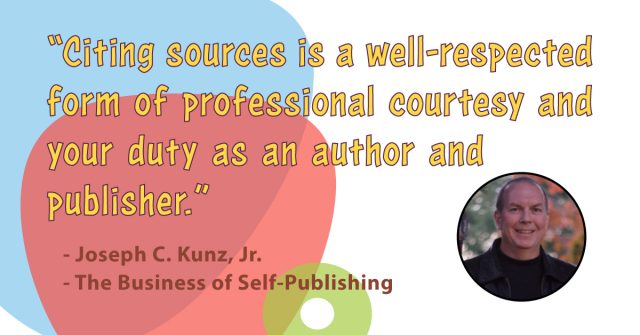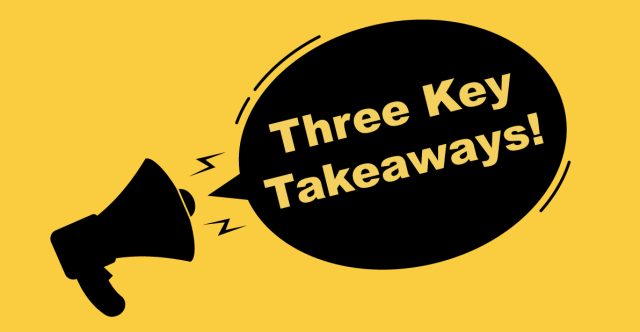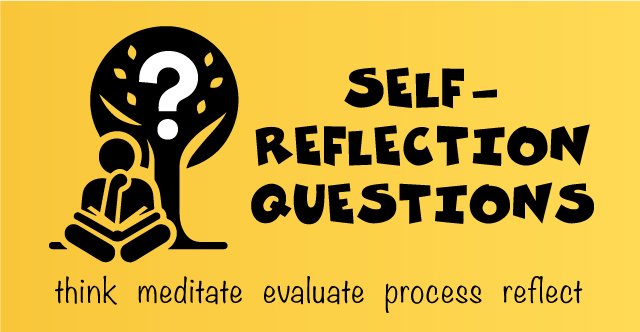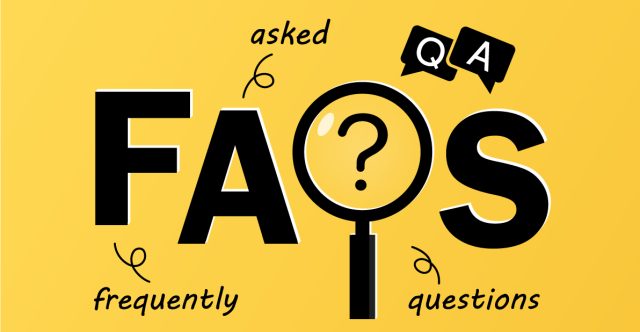Subtitle
Where Professional Courtesy Meets Publishing Success
Synopsis
Citing sources is both a professional courtesy and a crucial duty for authors and publishers, essential for acknowledging the use of others’ words and ideas. This introduction briefly discusses the two key citation styles you need to know.
What You Will Learn from This Article

1. Understanding and applying the correct citation style (MLA or APA) is crucial for self-publishers to give proper credit and avoid plagiarism.
2. Citing sources boosts an author’s credibility with their readers and peers, positively impacting their career and book sales.
3. The choice between comprehensive or selected bibliographies, including footnotes, endnotes, and annotated lists, enriches the book’s value and aids readers in further research.
Introduction: Why Is Citing Our Sources So Important?
Did you know that failing to cite your sources could tarnish your reputation and potentially end your career as an author? Citing sources is a formality and a critical aspect of professional integrity and respect in publishing.
It is your responsibility to acknowledge the contributions of others, giving credit where it is truly due. This acknowledgment goes beyond mere courtesy; it is a foundational pillar of ethical writing and publishing.
Neglecting to attribute ideas or words to their original authors is considered plagiarism, a serious ethical breach with far-reaching consequences. Being labeled a plagiarist can strip you of your credibility, alienate your peers and readers, and significantly harm your book sales and future publishing opportunities.

Let’s Dive into Why Proper Citation Is Essential for Your Success as a Self-Publisher
A. MLA vs. APA: Not Such a Difficult Decision After All
These two prominent professional organizations have developed referencing and citation guidelines for their respective audiences. Other organizations do this, but these two are the most well-known.
Whatever profession you are in, you will already know which format to use. For example, professionals in the humanities apply the MLA guidelines. The APA guidelines generally are applied by professionals in the sciences.
But for our discussion here, if you are writing non-fiction for a general audience, the default citation format for you to apply will be the rules of the MLA.
B. MLA vs. APA: A Few Key Terms
Works Cited (MLA) and References (APA) are bibliographic lists of your book’s works cited. Every sentence or idea you quote or use in your book must be in this section.
Works Consulted (MLA) and Bibliography (APA) are bibliographic lists of all the works you used but did not cite in your text. Every book, article, and website that helps you write your book should be in this section.
C. Additional Reading and Additional Sources
This section lists sources you believe readers might find interesting. This list could include a list of other publications or websites your readers might need to investigate for further research.
D. Annotated Works Cited and Annotated Bibliography
Annotated means that it is not only a cold and simplistic list of sources, as in typical works cited or bibliography, but also a summary, evaluation, and discussion of each source’s content and purpose for being used in your book. This format is very popular with readers.
E. Selected Bibliography and Full Bibliography
‘Complete’ bibliographies list every work cited, including all other relevant sources, whether directly mentioned in your book or not. ‘Selected’ bibliographies only list a few of the most critical pieces cited. Some books distinguish between ‘selected’ bibliographies and ‘full’ bibliographies.
F. Footnotes and Endnotes
You can provide footnotes and endnotes as additional information to enhance or support your argument. Such notes demonstrate the depth of your research and permit you to include relevant, but not always essential, information and concepts without interrupting the flow of your text.
Footnotes would typically be in an ‘Endnotes’ section at the end of each chapter. These notes can also briefly present an alternative idea you found in one of your sources. You can also list other articles or books on topics your readers might find interesting.
G. Internal, In-Text, and Parenthetical Citation
An internal, in-text, or parenthetical citation refers to crediting another author by citing their words and ideas within your book. You then reference this internal citation in your book’s works cited list or bibliography at the end. Parentheses enclose internal citations, making them parenthetical citations. (Kunz, p. 3)

Conclusion: If in Doubt, Cite It
There you have it – a quick run-down of the two main citation formats. The golden rule for non-fiction authors is to cite something if you are unsure whether it needs citation.
This thoroughness will only help your credibility with your peers and your readers. Citations prove that you have done your research and were very careful and thoughtful about it.
Citing your sources is a win-win situation for you and your readers. Your citations make you an essential resource for your readers. Citations can also help your readers pursue additional research on their own. All this will add up to more credibility and book sales for you.
Take the next step: Review your current or upcoming manuscript with these guidelines in mind. Are there any sections or references that could benefit from more precise citations? Make your work stand out for its integrity and thoroughness.
Remember, in writing, clarity and responsibility in citing sources build trust and enrich the knowledge ecosystem. Start citing with confidence today!

Three Key Takeaways
1. Proper Citation’s Value: Emphasizes the necessity of correctly applying MLA or APA citation styles for self-publishers to acknowledge sources properly, avoid plagiarism, and boost the author’s credibility, positively affecting their career and sales.
2. Choosing Between MLA and APA: Differentiates between MLA (for humanities) and APA (for sciences), recommending MLA for general non-fiction. This choice is pivotal for aligning with field-specific standards and enhancing the work’s professionalism.
3. Benefits of Diverse Citation Formats: Details the importance of various citation methods like Works Cited, Annotated Bibliographies, and Parenthetical Citations. These formats show research depth and guide readers for further study, increasing the author’s credibility and the work’s utility.
Decision Flowchart: Choosing Between MLA and APA
1. Start: Begin your citation journey.
2. Question 1: Are you writing in the humanities (e.g., literature, arts, philosophy)?
• Yes → Go to MLA
• No → Go to Question 2
3. Question 2: Are you writing in the sciences or social sciences (e.g., psychology, education, nursing)?
• Yes → Go to APA
• No → Go to Question 3
4. Question 3: Is your work focused on professional or scholarly publications outside humanities and sciences (e.g., business, law)?
• Yes → Research specific requirements for your field; some may prefer APA or have another particular style
• No → Go to Question 4
5. Question 4: Are you writing for a general audience without strict professional guidelines?
• Yes → MLA is generally more flexible and may be easier for general audiences to follow
• No → Seek advice based on your field’s unique needs
6. MLA: You’ve chosen MLA!
This style is favored for humanities work, focusing on authorship and ensuring readers can follow literary discussions easily.
7. APA: You’ve chosen APA!
This style is preferred in the sciences and social sciences, emphasizing the publication date and studies’ relevance and recency.
Notes for Use
• Always check with your publisher or instructor for specific requirements, as they may have preferences that override general guidelines.
• Consider your audience: Choose the style that best suits their expectations and needs for clarity in your work.
• Consult the latest edition of the style guide you are using. Both MLA and APA periodically update their guidelines.
This flowchart simplifies the decision-making process, but remember, the most critical part of citation is consistency and accuracy in giving credit where it is due.

Self-Reflection Questions
1. How will choosing the appropriate citation style (MLA or APA) for your work influence its credibility and acceptance within your target audience?
2. How can integrating comprehensive bibliographies, footnotes, and annotated lists into your publication enhance its value for your readers?
3. How does diligent citation practice reflect your professionalism as an author and contribute to the broader academic and publishing community?

Citation Style Checklist
After reading “The Art of Citation: Navigating MLA and APA in Self-Publishing,” use this checklist to ensure your manuscript adheres to best practices in citing sources and enhances your credibility as an author.
1. Identify Your Discipline
• Humanities (Consider MLA)
• Sciences (Consider APA)
• Writing for a general audience (MLA is the default)
2. Review Your Citations
• Ensure every use of another’s words or ideas is credited.
• Verify that the citation style is applied consistently throughout the manuscript.
3. Works Cited vs. References
• For MLA, have you included a “Works Cited” page?
• For APA, have you prepared a “References” page?
4. Consulted Works
• List of all materials used (but not directly cited) in a “Works Consulted” (MLA) or a “Bibliography” (APA) section.
5. Additional Reading and Sources
• This section is a compiled list of further readings or additional sources for your readers.
6. Annotated Bibliographies
• Consider creating an annotated bibliography for more engagement, providing summaries, evaluations, and discussions on how each source contributed to your book.
7. Selected vs. Complete Bibliographies
• Decide between a complete list of all sources or selecting the most critical sources cited in your work.
8. Footnotes and Endnotes
• Include footnotes or endnotes where additional information might enhance understanding or provide context.
9. In-Text Citations
• Checked that all in-text or parenthetical citations are correctly formatted and referenced in the bibliography or works cited list.
10. Final Review
• Read through your manuscript with an eye for citation thoroughness and accuracy.
• Consider if any section or reference would benefit from more explicit citations to avoid plagiarism and enhance credibility.
Call to Action
After completing this checklist, review any sections of your manuscript that might need attention. Remember, when in doubt, cite it. Your commitment to proper citation respects the original authors and positions you as a credible and trustworthy author in your field. Happy publishing!

Frequently Asked Questions
These questions and answers cover fundamental aspects of MLA and APA citation styles, the importance of avoiding plagiarism, and the role of citations in scholarly and professional writing.
Q1: What is the main difference between MLA and APA citation styles?
A: MLA (Modern Language Association) style is commonly used in the humanities and favors author-page number in-text citations, while APA (American Psychological Association) style is utilized in the sciences and social sciences, emphasizing author-date in-text citations.
Q2: How do you format book titles in MLA and APA styles?
A: In MLA style, book titles are italicized in the works cited list. In APA style, book titles are also italicized in the reference list.
Q3: What information is included in a journal article’s APA-style reference list entry?
A: An APA reference list entry for a journal article includes the author’s last name and initials, publication year, article title, journal title (italicized), volume number (italicized), issue number (if available), and page range.
Q4: How does the MLA style format in-text citations for sources with more than one author?
A: In MLA style, for sources with two authors, include both last names in the text or the parenthetical citation. For sources with three or more authors, include the first author’s last name followed by “et al.”
Q5: In APA style, how do you cite a source with no author?
A: If a source has no author, the work title moves to the author’s position in the reference list entry. Use a shortened version of the title in the parenthetical citation.
Q6: What is plagiarism, and why is it essential to avoid it?
A: Plagiarism is using someone else’s words, ideas, or work without proper attribution, presenting them as your own. It’s crucial to avoid plagiarism to maintain academic integrity, respect intellectual property, and uphold ethical standards in writing and research.
Q7: How can proper citation prevent plagiarism?
A: Proper citation gives credit to the original authors for their ideas and work, clearly distinguishing between their contributions and your insights or findings, thereby preventing plagiarism.
Q8: Are citations necessary when paraphrasing or summarizing someone else’s work?
A: Yes, even when paraphrasing or summarizing, you must provide citations to the source to acknowledge where the ideas or information came from, thus avoiding plagiarism.
Q9: Can you use the same citation format (MLA or APA) across different documents?
A: The choice between MLA and APA usually depends on the academic discipline or publication’s requirements. While you can maintain a consistent use within a document, different types of papers or fields of study might require different citation styles.
Q10: What should you do if you cannot find all the information required for a citation?
A: If specific details required for a complete citation are missing, provide as much information as possible to guide the reader to the source. For online sources, include the URL or DOI. Consult the specific citation style guide for advice on incomplete information.
A Detailed Comparison Between MLA and APA Formats
Here’s a detailed comparison between MLA (Modern Language Association) and APA (American Psychological Association) formats, focusing on key differences, with explanations and examples for each aspect:
1. General Format
• MLA: Primarily used in the humanities, such as literature, languages, and art. The format emphasizes authorship and avoids distraction from the text.
• Example: Double-spaced text, 1-inch margins, Times New Roman 12 pt font, and a “Works Cited” page.
• APA: Commonly used in the social sciences, including psychology, sociology, and education. It focuses on the date of publication to reflect the timeliness of the research.
• Example: Double-spaced text, 1-inch margins, Times New Roman 12 pt font, a running head on every page, and a “References” page.
2. In-text Citations
• MLA: Author-page style. Mention the author’s last name and the page number from which the quotation or paraphrase is taken.
• Example: (Smith 123).
• APA: Author-date style. Include the author’s last name and the year of publication. Page numbers are included for direct quotes.
• Example: (Smith, 2020, p. 123).
3. Works Cited/References List
• MLA: Titled “Works Cited,” this list includes names of all authors (inverted), complete titles of sources, and publication details. The author’s last name alphabetizes entries.
• Example: Smith, John. Understanding Languages. Language Press, 2018.
• APA: Titled “References,” entries include names of up to 20 authors (inverted and followed by initials), publication year in parentheses, italicized title of the work, and publication details. The author’s last name alphabetizes entries.
• Example: Smith, J. (2018). Understanding languages. Language Press.
4. Titles
• MLA: Titles of more significant works like books and journals are italicized. Article or chapter titles are placed in quotation marks.
• Example: “The Use of Language in Modern Literature” in Literary Explorations.
• APA: Similar to MLA, but the capitalization rules are stricter. Only the first word of the title, the subtitle, and proper nouns are capitalized.
• Example: The use of language in modern literature. In Literary explorations.
5. Headings
• MLA: It does not have a specific system for headings; guidelines suggest consistency and unambiguous indication of the hierarchy.
• Example: Bold for primary headings, italics for subheadings.
• APA: Provides a specific system for organizing levels of headings, marked by formats like bold and italics, indentation, and text position.
• Example:
Level 1: Centered, Bold, Title Case
Level 2: Left-aligned, Bold, Title Case
Level 3: Indented, bold, sentence case, ending with a period.
6. Quotations
• MLA: Allows formatting quotations of more than four lines as block quotes.
• Example: Indent the quote one inch from the left margin without quotation marks.
• APA: Similar block quote formatting for quotations over 40 words but includes specific rules for citing such quotations.
• Example: Indent the entire quote half an inch from the left margin without quotation marks, followed by the citation.
7. Abbreviations
• MLA: Use abbreviations sparingly. Certain commonly accepted abbreviations are used in the works cited (e.g., et al., ed.).
• APA: Has specific rules for abbreviations, especially in the case of terms used frequently within the same article or study.
8. Numbers and Statistics
• MLA: Spell out numbers that can be written in one or two words and use numerals for numbers that require more than two words.
• APA: Has specific guidelines for representing numbers, requiring numerals for numbers ten and above and all numbers in the abstract, tables, and figures.
Conclusion
Understanding these differences is crucial for academic writing, ensuring that your work adheres to the conventions of your disciplinary community.
By following the specific guidelines of MLA or APA format, authors can enhance the clarity and credibility of their work, making it more accessible to readers and scholars within their field.
Moreover, proper adherence to these styles not only aids in avoiding plagiarism but also facilitates more straightforward navigation and comprehension of the material for readers, contributing to the broader dissemination of knowledge.
Whether you are drafting a manuscript for publication, preparing an academic paper, or compiling research findings, choosing the proper citation style and applying it consistently is fundamental to the integrity and impact of your scholarly work.
May your writing journey be enriched with knowledge and your path marked by innovation and creativity, Joe.


